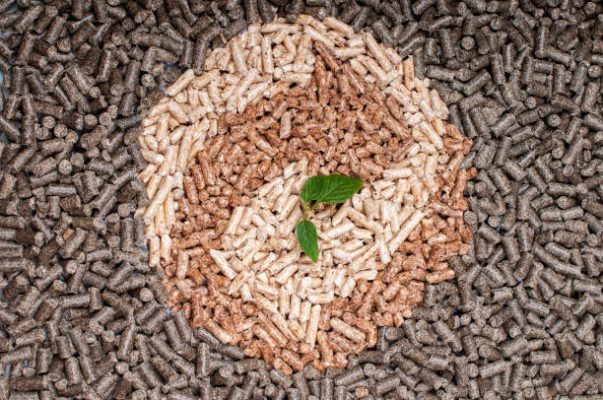WHAT ARE WOOD PELLETS?
Wood Pellets are a highly consistent biomass fuel allowing for easy handling and storage, as well as efficient energy conversion. As a globally traded commodity, wood pellets are used for space heating in residential appliances, boilers, district heating plants and for electricity generation in large coal-burning power plants.
Wood pellets are small densified cylindrical granules produced by compression of sawdust. As a result, wood pellets are a consistent fuel that can easily be transported and are suited for automated fuel handling systems.

ORIGIN AND SOURCES
Wood pellets are mainly produced from the by-products of traditional forestry operations such as sawmills and finished wood products manufacturing. Harvest residues are also used as raw material though to a much lesser extent. The highest quality sources tend to come from milling and manufacturing residues with little or no bark or ash content.
The CAN/CSA-ISO 17225 Part 2 Standard1 classifies several grades of wood pellets based on the origins and source of raw materials. Raw biomass used in the production of high grade wood pellets, Grades A1 and A2 (residential or commercial applications), primarily comes from mill residues including sawdust, shavings and cut-offs (Classification 1.2.1) and stem wood (Classification 1.1.3).
In addition to the above sources, Grade A2 allows for the use of logging residues (Classification 1.1.4) and whole trees without roots (Classification 1.1.1)2
Sources of the raw biomass impacts fuel specifications.
For example, A1 grade wood pellets contain low ash and nitrogen contents, while Grade A2 wood pellets have slightly higher ash and nitrogen content.
Grade B wood pellets are manufactured from more diverse sources, over and above those used for Grade A wood pellets, and can include bark (Classification 1.1.6), residues from thinning, pruning, and arboriculture operations in city parks (Classification 1.1.7), and chemically untreated used wood (Classification 1.3.1).
Both softwood and hardwood tree species can be sourced for wood pellets. It is anticipated that purposely grown woody crops such as poplar and willow grown on marginally productive land may be sourced for wood pellet production in the future.
KEY PROPERTIES
The production of pellets starts with size reduction of the raw biomass source followed by drying. The material is then extruded under high pressure in pellet machines coming out as small cylinders typically with a 6 or 8 mm diameter, and a length of up to 40 mm. Small amounts of additives and binders can be blended with biomass material to improve the quality of wood pellets, though this is not common in Canada.
A buyer or user of graded wood pellets should consider several quality characteristics:
-
Diameter and Length (D and L)
Tested in the lab or production site. Two alternative diameters are produced: 6 mm and 8 mm (± 1 mm). The length of the individual wood pellets should be larger than 3.15 mm, and less than or equal to 40 mm (3.15 < L ≤ 40 mm) with the maximum length not exceeding 45mm. The quantity of pellets longer than 40 mm can be up to 1% in weight.
The quantity of pellets shorter than 10 mm (weight %) is stated by the producer.
-
Durability (DU) and Fines (F)
Determined in the lab by tumbling and screening the pellets. After tumbling, the quantity of pellets (in weight %) staying on the screening with the screen opening size greater than 3.15 mm determines the durability. The quantity of pellets passing through the screen with less than 3.15 mm opening size is defined as fines. Pellets handled in large quantities (bulk) experience some attrition, resulting in higher content of fines.
-
Bulk Density (BD) –
Tested in the lab to provide guidance for sizing the storage space based on energy consumption needs. Minimum bulk density should be greater than or equal to 600 kg/m3. The actual bulk density of the pellets is often stated by the producer on the packaging. Rough estimates of bulk density can be made by weighing a known volume. When testing density, attempts should be made to minimize the void space between pellets by shaking and tapping pellets well.
-
Calorific value (Q) and Moisture Content (M)
Measured by lab testing. All grades of wood pellets must have moisture content less than 10% and a high calorific value greater than or equal to 18.6 MJ/kg (or low heating value of greater than or equal to 16.5 MJ/kg).
-
Ash Content (A) –
Tested in the lab. For residential and commercial applications, ash content is low and increases from Grade A1 to A2 to B (Table 1). For residential stoves, furnaces and boilers, it is recommended to use wood pellets with low ash content.


